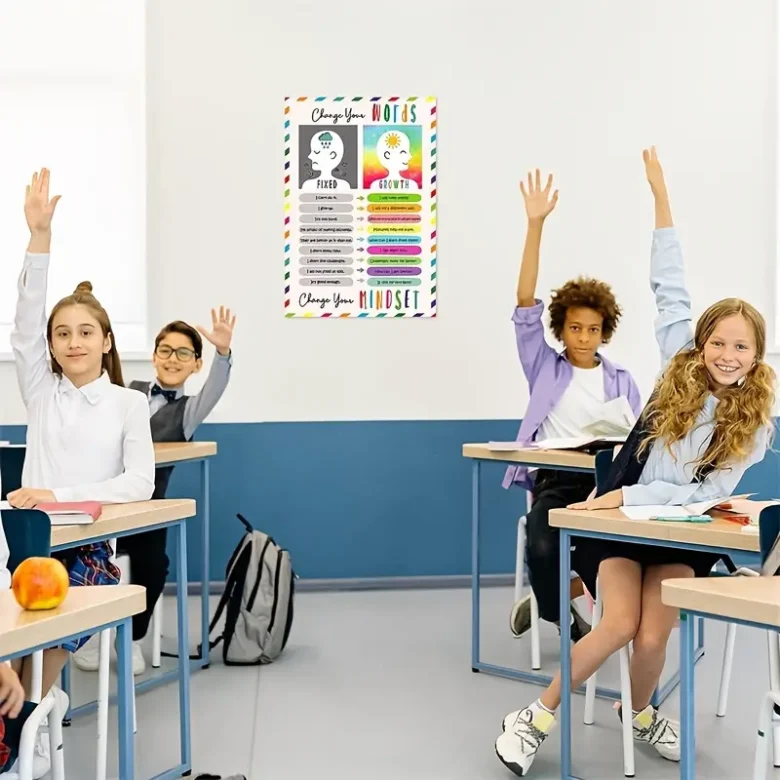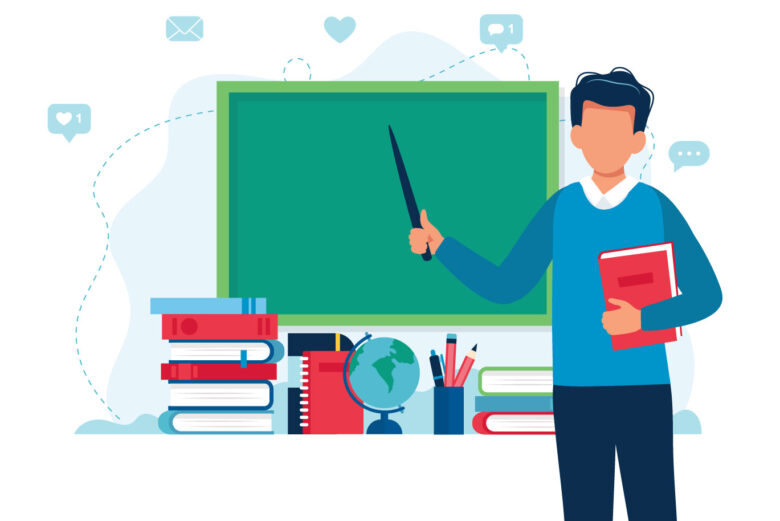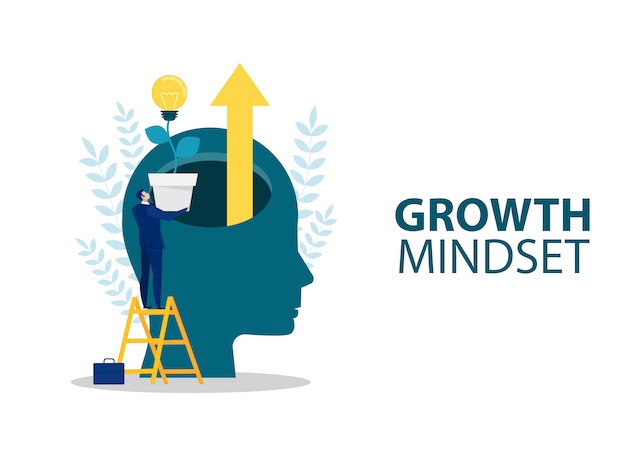From the back row daydreamers to the tech-obsessed texters, every student comes with their own set of distractions, so you can imagine that keeping a classroom of kids engaged is no small feat.
But despite these challenges, we find those moments when it all comes together: a lesson that resonates, a project that excites, and suddenly, those distracted kids are hooked. That’s what keeps us going. Let’s share some proven strategies that can help turn those classroom challenges into opportunities for real engagement.
Get to Know Each Student Individually
One of the most effective ways to engage students is to make a personal connection with them. This means more than just knowing their names, it involves understanding their interests, fears, and motivations.
Start the school year or term by having one-on-one conversations, conducting interest surveys, or asking them to write about themselves.
*This information will be invaluable as you tailor your teaching to resonate with each student.
Customize Learning Experiences
Using the insights gained from personal interactions, customize your lessons to align with students’ interests. For example, if a significant number of students are interested in video games, incorporate game-based learning where they can design or analyze elements of a game as part of a class project.
Create an Inviting and Supportive Classroom Environment

Create a vibrant and organized space with areas dedicated to different activities—such as a reading corner, a group discussion zone, and a hands-on activity station. Use colorful, educational posters and student-created artwork to decorate the walls.
Ensure the classroom arrangement is flexible, allowing you to alter the layout to best suit the activity of the day.
Foster a Positive Emotional Climate
Establish a culture where mistakes are seen as learning opportunities and where every student feels valued and understood. Set clear expectations for respect and cooperation.
Regularly engage in team-building activities to strengthen the class dynamic and ensure every student knows their voice is heard and appreciated.
Implement Interactive Learning Strategies
Move away from the traditional lecture format and embrace teaching methods that involve active participation. Use techniques such as collaborative group projects, peer-to-peer teaching, and hands-on experiments.
Utilize Technology for Interactive Learning
Technology can be a powerful tool in making learning interactive and accessible. Use educational apps and tools like Invideo AI that encourage students to engage actively with the content. Interactive quizzes, virtual reality experiences, and collaborative online tools can enhance traditional teaching methods and provide a diverse learning experience that meets the needs of all students.
Regularly Mix Up Your Teaching Techniques

Regularly integrate different instructional techniques such as storytelling, demonstrations, simulations, and role-playing. This variety can cater to different learning styles and keep students eager to see what comes next.
Promote Inquiry and Curiosity
Encourage students to ask questions and explore topics that pique their curiosity. Dedicate time for inquiry-based learning, where students can conduct research, engage in discussions, and present their findings on subjects they are passionate about. This approach builds critical thinking and research skills.
Utilize Thought-Provoking Hooks
Begin each lesson with a provocative question, a puzzling scenario, or an intriguing fact. These hooks can spark students’ curiosity and set the tone for a lesson focused on exploration and discovery. It engages students right from the start, making them more invested in the learning process.
Offer Choices and Foster Autonomy
Allow students to have a say in their learning by offering choices. Whether it’s selecting which book to read, choosing topics for a project, or deciding how to present their findings, giving students choices can significantly boost their engagement and motivation.
Implement Learner-Centered Activities
Design activities that put students at the center of their learning. Projects like creating a documentary, designing a science experiment, or writing a play give students autonomy over their learning and allow them to explore their strengths and interests. It leads to deeper engagement and a greater sense of accomplishment.
Build Meaningful Relationships with Students

Developing trust with your students is essential for creating a supportive learning environment. Show consistent interest in their academic progress and personal well-being. Regular, informal check-ins can help you monitor their emotional and educational needs, making them feel valued and supported.
Connect Lessons to Everyday Life
Students engage more deeply with material that they can see is relevant to their lives. Make it a point to link lessons to real-world applications.
For instance, use mathematical concepts to solve problems like budgeting for a school event or calculating the probability in real-life scenarios.
Bring Experts into the Classroom
Invite guest speakers from various professions to talk about how they use the subject matter in their careers. This not only enriches the learning experience but also provides students with role models and career aspirations. It helps students see the practical importance of their studies beyond the classroom.
Implement Reflective Journals
Encourage students to keep reflective journals where they can write about what they’ve learned, their feelings about different activities, and their personal growth over the course. It encourages them to think critically about their learning processes and to identify areas where they excel or need improvement.
Discuss Learning Experiences
Regularly schedule class discussions focused on reflecting on what has been learned and how it was learned. This can help students internalize their experiences and understand how they learn best, which is crucial for developing effective learning strategies.
Use Multiple Forms of Media

Use videos, podcasts, and interactive simulations alongside traditional textbooks and verbal instruction. This multimodal approach can help maintain student interest and cater to diverse learning styles.
Engage students by involving multiple senses in the learning process. Activities that combine visual elements, sounds, and hands-on tasks can enhance engagement and memory retention.
For example, while teaching a lesson about plant biology, include a lab session where students can dissect plant parts while viewing high-quality images and videos of the plants in their natural environments.
Utilize Assessment as a Learning Tool
Move beyond traditional tests and quizzes by using interactive assessments that can engage students in the evaluation process. Tools like online quizzes with instant feedback or gamified learning assessments can make the evaluation process enjoyable and educational. Incorporating platforms such as Quizado can transform review sessions into exciting, game-like experiences that boost participation and reinforce learning.
Foster a Growth Mindset

Promote a growth mindset by praising effort rather than innate ability. Emphasize that intelligence and abilities can be developed through dedication and hard work. This approach helps reduce fear of failure and encourages a more resilient attitude towards challenges.
Teach About the Brain’s Ability to Grow
Incorporate lessons about how the brain works and how it can grow with effort and learning. Understanding that their intellectual capabilities are not fixed but can be improved with effort can motivate students to embrace challenges and persist despite difficulties.
The Bottom Line
Engaging students is an art that requires creativity, empathy, and an ongoing commitment to adapting your teaching practices. By employing these detailed strategies, you can create a classroom environment that fosters active learning, nurtures curiosity, and encourages students to take charge of their educational journeys.
With these methods, you’ll not only capture their attention but also inspire a lifelong passion for learning.

